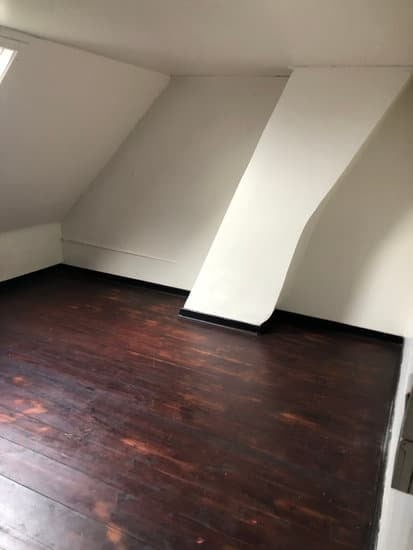Are you looking for ways on how to get help with home improvements? Whether you’re facing a small repair or a major renovation, understanding the need for assistance is crucial.
Many individuals and families may find themselves in situations where a little extra support can make a world of difference in maintaining and improving their living spaces. In this article, we will explore various avenues for getting the help you need to make your home safer, more comfortable, and aesthetically pleasing.
One of the first considerations when embarking on a home improvement project is whether to tackle it yourself or seek professional help. We’ll delve into the pros and cons of both approaches to help you make an informed decision based on your skills, available time, and budget.
In addition to DIY and professional assistance, there are various government assistance programs, non-profit organizations, and community resources that offer financial aid and support for home improvements. We will discuss these options in detail to provide you with a comprehensive understanding of the assistance available. Whether you are looking for grants or loans, there are avenues that can potentially offset the costs of your home improvement projects.
DIY vs Professional Help
When it comes to home improvements, one of the initial decisions homeowners must make is whether to tackle the projects themselves or seek professional help. Both options have their own set of pros and cons that should be carefully considered before making a decision. Here are some factors to weigh when deciding between DIY and professional assistance:
- Cost: DIY projects can save money on labor costs, but professionals may have access to discounted materials and be able to complete the work more efficiently.
- Skill level: Assess your own abilities honestly, as poorly executed DIY projects can end up being more costly in the long run.
- Time: Consider how much time you are willing and able to invest in a project, as well as any deadlines or time constraints you may have.
For those who are leaning towards seeking professional help for their home improvements, it’s important to do thorough research and find a contractor who is reliable, skilled, and transparent. Consider the following tips when searching for a trustworthy professional:
- Ask for recommendations from friends, family, or neighbors who have had positive experiences with contractors.
- Check online reviews and ratings on reputable websites such as Angie’s List or the Better Business Bureau.
- Interview multiple contractors, ask for references, and obtain detailed written estimates before making a decision.
Ultimately, the decision between DIY and professional help will depend on individual circumstances such as budget, available time, skill level, and the complexity of the project. It’s important to carefully weigh these factors before embarking on any home improvement endeavor.
Government Assistance Programs
When considering home improvements, the financial aspect plays a significant role in the decision-making process. For individuals or families who may be struggling to cover the costs of necessary upgrades, government assistance programs can provide much-needed relief. Here are some available options for financial aid:
- Federal Housing Administration (FHA) Loans: The FHA offers loans specifically designed for home improvements, with low down payment requirements and flexible eligibility criteria.
- USDA Rural Development Grants: This program provides grants and loans to low-income homeowners in rural areas for repairs and improvements to make their homes more safe and sanitary.
- Weatherization Assistance Program (WAP): Administered by the Department of Energy, WAP helps eligible households improve energy efficiency, reduce utility bills, and ensure health and safety through weatherization measures.
In addition to these federal programs, many states and local governments also offer their own assistance programs tailored to the needs of their communities. These may include grants, low-interest loans, or tax credits for home improvement projects.
Overall, it is essential to research and understand the specific requirements and application processes for each government assistance program. Individuals should consult with local housing authorities or community development agencies to explore available options based on their location and financial circumstances. By taking advantage of these resources, homeowners can receive the support needed to carry out necessary home improvements without straining their budgets.
Non-Profit Organizations
Low-income families and individuals often face challenges when it comes to making necessary home improvements due to financial constraints. However, there are non-profit organizations that provide support and assistance to help alleviate this burden. These organizations aim to ensure that everyone has access to a safe and well-maintained home, regardless of their income level.
Types of Support Offered
Non-profit organizations offer a range of support services, including providing funding for essential repairs, offering free or low-cost construction materials, and connecting homeowners with volunteer labor for home improvement projects. Additionally, some organizations may provide educational workshops on basic home maintenance and repair skills to empower individuals to take care of minor improvements themselves.
Finding the Right Non-Profit Organization
To find the right non-profit organization for assistance with home improvements, individuals can start by researching local initiatives in their area. Many communities have non-profit groups dedicated to housing affordability and stability. It’s important to reach out directly to these organizations to inquire about their eligibility criteria and the specific types of assistance they offer.
Benefits of Seeking Support From Non-Profits
Seeking support from non-profit organizations can provide low-income families and individuals with access to resources and expertise that they may not have on their own. By receiving assistance from these organizations, homeowners can create a safer and more comfortable living environment for themselves and their families without shouldering the full financial burden.
Community Resources
Local Government Programs
Many local governments offer assistance programs to help with home improvements, especially for low-income families and individuals. These programs may provide grants, loans, or even tax incentives to make necessary repairs or upgrades more affordable. Contact your city or county government offices to inquire about the availability of such resources in your area.
Community Development Organizations
Non-profit community development organizations often provide support for home improvements in underserved neighborhoods. These organizations may offer financial assistance, construction expertise, and even volunteer labor to help improve housing conditions within the community. Research and reach out to these groups in your area to see if they can provide any assistance for your home improvement needs.
Local Charities and Foundations
There are also local charities and foundations that dedicate their resources to helping homeowners in need of assistance with home improvements. These organizations may focus on specific types of projects, such as accessibility modifications for people with disabilities or weatherization services for energy efficiency. Look into these charitable entities in your community to see if they can provide support for your particular home improvement requirements.
Utilizing the resources available in your local community can significantly alleviate the financial burden of home improvements. Whether it’s through government programs, community development organizations, or local charities, there are various avenues to explore for assistance with making necessary upgrades or repairs to your home.
Home Improvement Grants
One key aspect of navigating the application process for home improvement grants is understanding the various types of grants available. Some grants may be geared towards specific purposes such as energy efficiency improvements, accessibility modifications for individuals with disabilities, or repairs related to health and safety concerns. By identifying which type of grant best aligns with your needs, you can streamline the application process and increase your chances of securing funding.
In addition to understanding the specific purpose of the grant, applicants must also meet certain eligibility criteria. This can include factors such as income level, home ownership status, location, and more.
Being aware of these requirements upfront can help you determine if you qualify for a particular grant and avoid wasting time on applications that you may not be eligible for. Furthermore, some grants may require documentation such as proof of income or quotes from contractors, so being prepared with all necessary paperwork is crucial in ensuring a smooth application process.
| Grant Types | Eligibility Criteria |
|---|---|
| Energy Efficiency Improvements | Income level, Home ownership status |
| Accessibility Modifications | Location, Documentation required |
| Health and Safety Repairs | Proof of income, Quotes from contractors |
Home Improvement Loans
When it comes to larger home improvement projects, such as kitchen renovations or room additions, the cost can be significant. In these cases, seeking a home improvement loan may be a viable option to cover the expenses. One popular type of home improvement loan is the home equity loan, which allows homeowners to borrow against the equity in their property. This type of loan typically offers lower interest rates compared to other forms of financing.
Another option for financing larger home improvement projects is through a home equity line of credit (HELOC). Similar to a home equity loan, a HELOC allows homeowners to borrow against their home’s equity, but it operates more like a credit card with a revolving credit line. This means that homeowners can borrow up to a certain limit and only pay interest on the amount they use.
For those who do not have substantial equity in their homes, unsecured personal loans are also available for home improvement purposes. These loans do not require collateral such as a property or vehicle, making them accessible to a wider range of individuals. However, it’s important to note that unsecured personal loans typically come with higher interest rates compared to secured options.
Overall, exploring different financing options for larger home improvement projects is crucial in order to determine the most suitable choice based on individual financial circumstances and needs.
| Financing Option | Key Features |
|---|---|
| Home Equity Loan | Borrow against home’s equity; lower interest rates |
| Home Equity Line of Credit (HELOC) | Revolving credit line; flexible borrowing options |
| Unsecured Personal Loan | No collateral required; higher interest rates |
Tips for Finding Reliable Contractors
When tackling home improvement projects, finding a reliable contractor is crucial to ensuring quality work and transparency throughout the process. Whether it’s a small renovation or a major construction project, hiring the right contractor can make all the difference in the outcome of your home improvement endeavor.
One of the first steps to finding a reliable contractor is to do thorough research. Start by asking for recommendations from friends, family, and neighbors who have had successful experiences with contractors. Additionally, websites like Angie’s List and HomeAdvisor can provide reviews and ratings for local contractors in your area. Look for contractors who have a good track record of completing projects on time, within budget, and to their clients’ satisfaction.
Once you’ve identified potential contractors, it’s important to conduct interviews and ask for references. Meeting with them in person or virtually will give you an opportunity to gauge their professionalism, communication skills, and expertise in handling your specific home improvement needs.
Don’t hesitate to ask for references and follow up with previous clients to inquire about their experience working with the contractor. This step can help you gain valuable insight into the contractor’s reliability, workmanship, and overall performance.
Finally, before making a final decision, be sure to verify the contractor’s credentials and licenses. A reputable contractor should be properly licensed, bonded, and insured according to state regulations. Verifying these credentials will protect you from any potential liabilities in case of accidents or substandard work during the project. By taking these precautions and thoroughly vetting potential contractors, you can ensure that your home improvement project is in capable hands.
Conclusion
In conclusion, seeking help for home improvements is an important step for homeowners who may not have the resources or expertise to tackle projects on their own. Whether it’s through government assistance programs, non-profit organizations, or community resources, there are various options available to provide financial aid and support for low-income families and individuals. It is crucial to explore these avenues and take advantage of the assistance that may be available.
While DIY projects can be cost-effective, there are certain tasks that require professional help. It’s essential to weigh the pros and cons of DIY versus hiring a contractor, considering factors such as time, cost, and complexity of the project. Additionally, finding reliable contractors is key to ensuring quality work and transparency throughout the home improvement process.
Overall, the importance of seeking help for home improvements cannot be overstated. Whether it’s through grants, loans, or community resources, homeowners should not hesitate to explore these options and seek the assistance they need. By doing so, they can make necessary upgrades to their homes and create a safe and comfortable living environment for themselves and their families.
Frequently Asked Questions
Who Is Eligible for Government Home Improvement Grant Kentucky?
In Kentucky, eligible individuals for government home improvement grants typically include low-income homeowners who need assistance to repair or improve their homes. These grants are designed to help people with limited financial resources make necessary repairs and upgrades to ensure their homes are safe and livable.
Eligibility criteria often include income level, home ownership status, and the nature of the repairs needed.
Who Is Eligible for Government Home Improvement Grant in Wisconsin?
For residents of Wisconsin, eligibility for government home improvement grants is similar to that in other states. Low-income homeowners who require assistance with home repairs or improvements can often qualify for these grants. Income requirements, home ownership status, and the specific renovations needed are factors that determine eligibility for these programs.
What Is the Ohio Housing Assistance Grant Program?
The Ohio Housing Assistance Grant Program is a state initiative designed to provide financial aid to low- and moderate-income homeowners for necessary home repairs and improvements. The program aims to support individuals who may not have the financial means to address issues such as structural deficiencies, accessibility modifications, or energy efficiency upgrades in their homes.
The funds provided through this program can help eligible homeowners make their residences safer, more comfortable, and more sustainable.

I’m thrilled to have you here as a part of the Remodeling Top community. This is where my journey as an architect and remodeling enthusiast intersects with your passion for transforming houses into dream homes.





